In this project you'll learn how add the effect of rain to an image using GIMP.
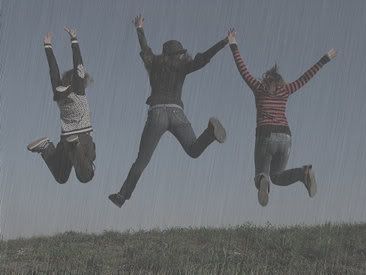
In this exercise, you will:
- Make color adjustments with the Hue-Saturation... dialog
- Adjustment brightness and contrast
- Use the noise generator
- Apply a motion blur
Open the image to which you want to apply the rain effect. You can get the image used in this lesson here. The original photo is by Sanja Gjenero and was downloaded from stock.xchng.
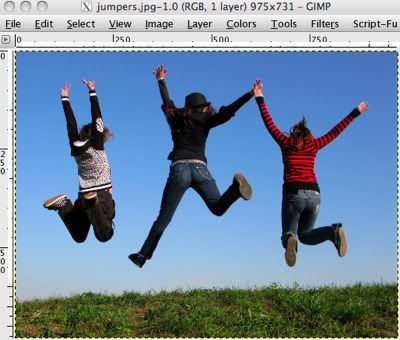
I found it necessary to darken this particular image for a better effect, Colors > Hue-Saturation…, Lightness: -15 Saturation -60. You may or may not need to adjust your image similarly.
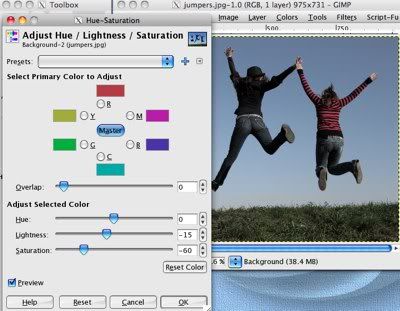
Add a new transparent layer named Rain. Set the foreground color to a medium gray. I used #767676. Fill the Rain layer with the foreground color, Edit > Fill with FG Color.
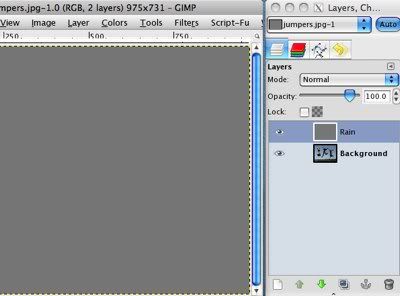
The rain effect is created in four steps:
1) Add noise to the Rain layer. Filters > Noise > Noise Generator…, click the Laplace tab and set the Scale to about 22. Luminance noise only should be checked to get grayscale noise rather than color.
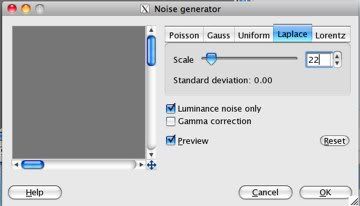
2) Blur the noise. Filters > Blur > Motion Blur…, Blur Type: Linear, Blur Parameters: Length 100, Angle 100.
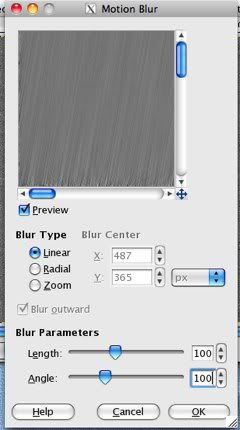
3) Increase the contrast. Colors > Brightness-Contrast…, increase Contrast to about 45.
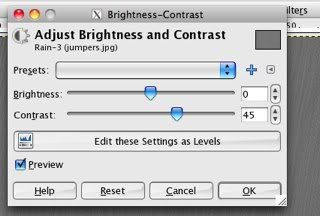
4) Decrease the opacity of the Rain layer. In the Layers pallet, slide the Opacity control left to about 60.
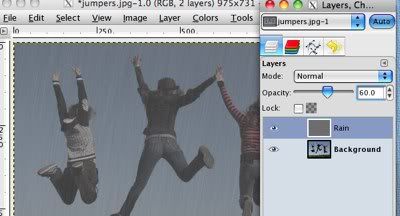
There you have it!

There's a lot of room for tinkering with these settings to achieve just the effect you want. Go ahead, be a mad scientist, control the weather!

No comments:
Post a Comment